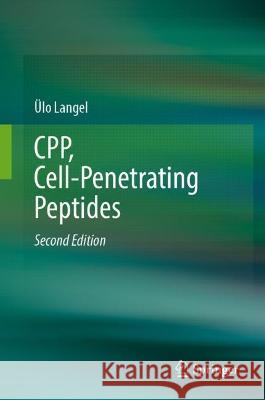Cpp, Cell-Penetrating Peptides » książka
topmenu
Cpp, Cell-Penetrating Peptides
ISBN-13: 9783031387302 / Angielski
Cpp, Cell-Penetrating Peptides
ISBN-13: 9783031387302 / Angielski
cena 614,00 zł
(netto: 584,76 VAT: 5%)
Najniższa cena z 30 dni: 612,57 zł
(netto: 584,76 VAT: 5%)
Najniższa cena z 30 dni: 612,57 zł
Termin realizacji zamówienia:
ok. 20 dni roboczych.
ok. 20 dni roboczych.
Darmowa dostawa!
Kategorie:
Kategorie BISAC:
Wydawca:
Springer
Język:
Angielski
ISBN-13:
9783031387302











